Talk of gravitation pulls students in
Famed scientist and EHS grad speaks to students
Gravitational pull, black holes, and Einstein’s theory are topics you would normally hear in science class. Monday, it was discussed in front of the entire school. A special assembly was hosted by Physics teacher Rosemary Wulf and EHS graduate Dr. Stan Whitcomb, “I think it was very inspiring and educational. It was really interesting. It doesn’t matter what school you go to, you can really accomplish anything you put your mind to,” Savion Romero (10) said.
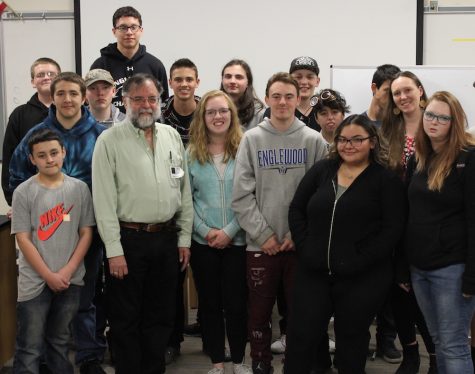
Romero was one of the dozens of students who listened to Dr. Whitcomb, who graduated in 1969, “It was a huge school at the time. My graduating class was about 450, that’s three times larger. We had 10, 11 and 12, middle school wasn’t here. There was a good focus on a couple of things, mainly academics and shop. There was a strong focus on science, strong woodworking, fabrication classes and machine shop. My brother was in the machine shop. He still works in that field now. We complained about administration and teachers, but we kept our voices down a bit more than you do now.”
Dr. Whitcomb is the chief scientist on the Laser Interferometer Gravitational-Wave Observatory (LIGO) at Caltech. The LIGO project was the first to detect gravitational waves, a phenomenon that was predicted by Albert Einstein over 100 years ago. He found his love for science in 2nd grade and it grew at Englewood High school, “I had two teachers who really influenced me. My biology teacher ran a solid class. The other one was the physics teacher. He had retired from the Air Force. His class, it wasn’t flashy, it was rigorous. I can’t imagine he would have someone like me come to visit his class, it would take away from the content, and it was a very solid class. When I got to Caltech I learned my physics class, even though it wasn’t AP, was right in line with a good solid AP class.”
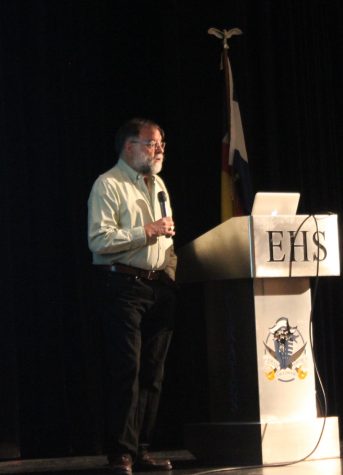
In the mid 80’s Caltech began the LIGO project and Dr. Whitcomb was an important part of it, “I fell in love with the LIGO project years ago. I knew I was going to do that no matter what. There were a lot of ups and downs, and when I thought, maybe I should do something different, I always ended up going back to it.”
Dr. Whitcomb explained to students how LIGO’s L-shaped detectors measure a motion 10,000 times smaller than an atomic nucleus, “If I had a nickel for everyone who said you can’t make a measurement that precise, I wouldn’t be able to do a lot, but I could buy you all a cup of coffee.”
Dr. Whitcomb said a lot of people didn’t fully believe in the project, “I was absolutely convinced it was going to be successful, I believed it 100-percent. I have to tell you, these facilities cost 100’s of millions of dollars. We went to the National Science Foundation and asked them to spend a large portion of their budget. We had to make a small scale model and show them the pieces of the puzzle. There were scientists who were skeptical. A review panel in 1987 was put together because one of the most influential scientists said there was a group wasting money on LIGO. They put together a panel with the skeptic, they dug into it, what could be done, what hadn’t been demonstrated. At the end of that time, they came out with a very strong endorsement of it.”

The 2017 Nobel prize in physics was awarded to scientists working in LIGO for the detection of gravitational waves. Dr. Whitcomb recently was awarded the 2017 Henry Draper medal for an original astronomical experiment that benefited science.
“A lot of technologies were born out of the LIGO work. Lasers have been used in semiconductor manufacturing, precision time-keeping, and ultra-high speed printers. The mirrors have been used in semiconductor technologies,” Dr. Whitcomb said.
Many students were inspired by his presentation, “It was informational and I learned about something I didn’t know much about. I learned that if you try hard, you can succeed with what you want to do in life,” Leahandra Mackey (11) said.
He believes he could have thrown in the towel at any point when the obstacles were too much. His lesson to students? Have perseverance and passion, “I don’t know if you can do anything you want. I think there are limits. Look, if I wanted to be a basketball player, that wasn’t going to happen, but if you keep at it, you can make important things happen.”
Your donation will support the student journalists of Englewood High School - CO. Your contribution will allow us to purchase equipment and cover our annual website hosting costs.
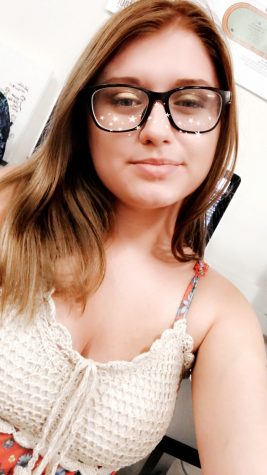
I am part of the senior class of 2020. I hope to continue my career in journalism and leave a legacy for the next Editor. I have put my all into making...

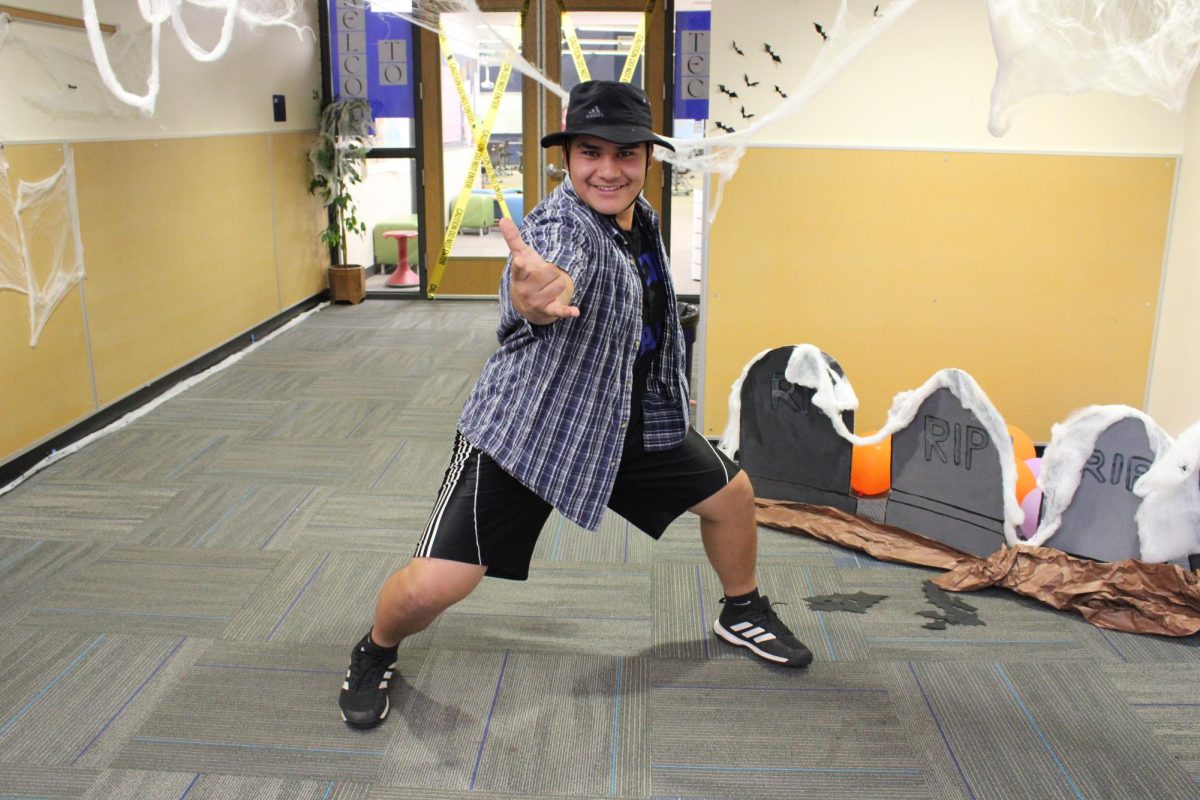
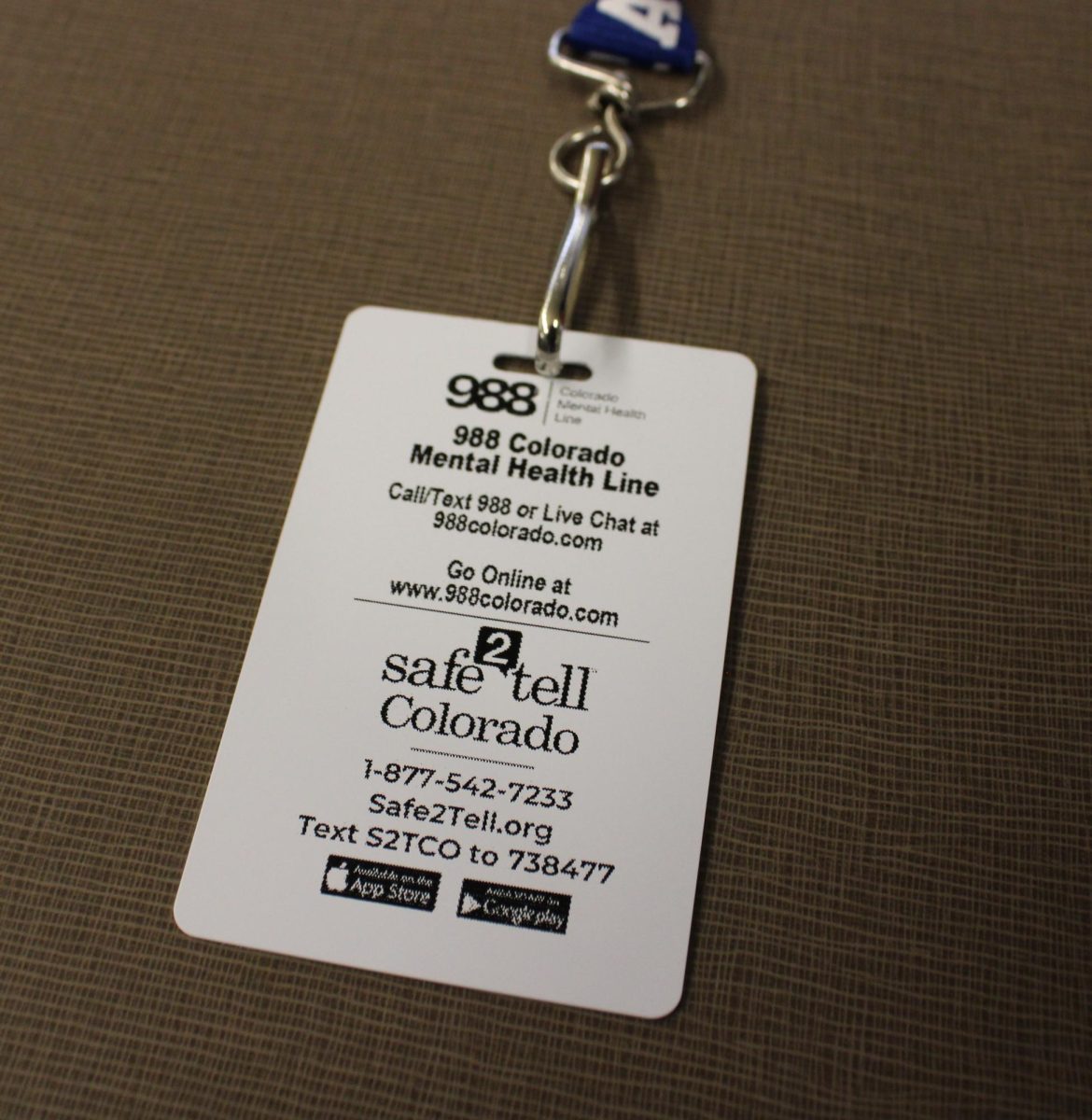

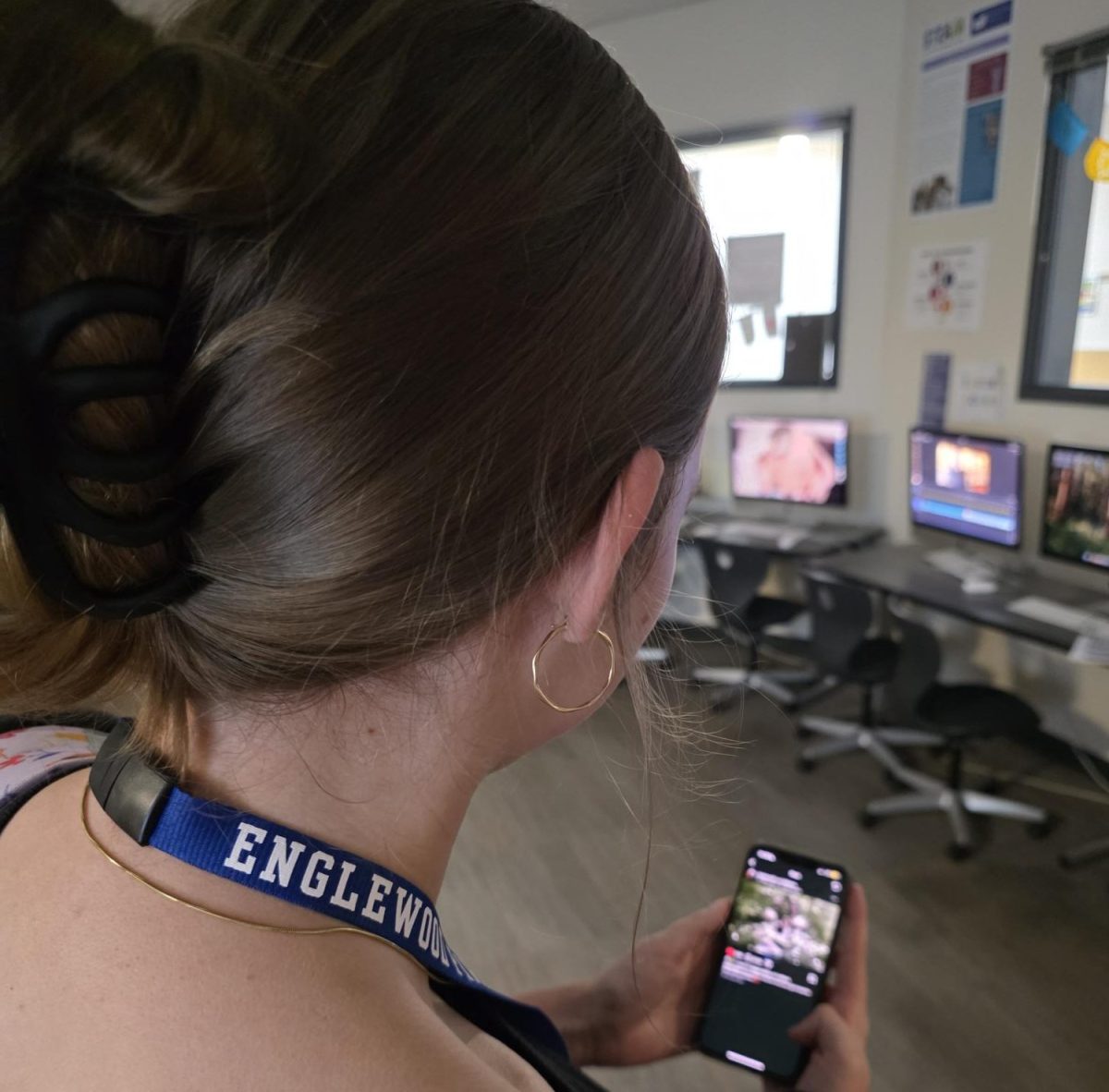


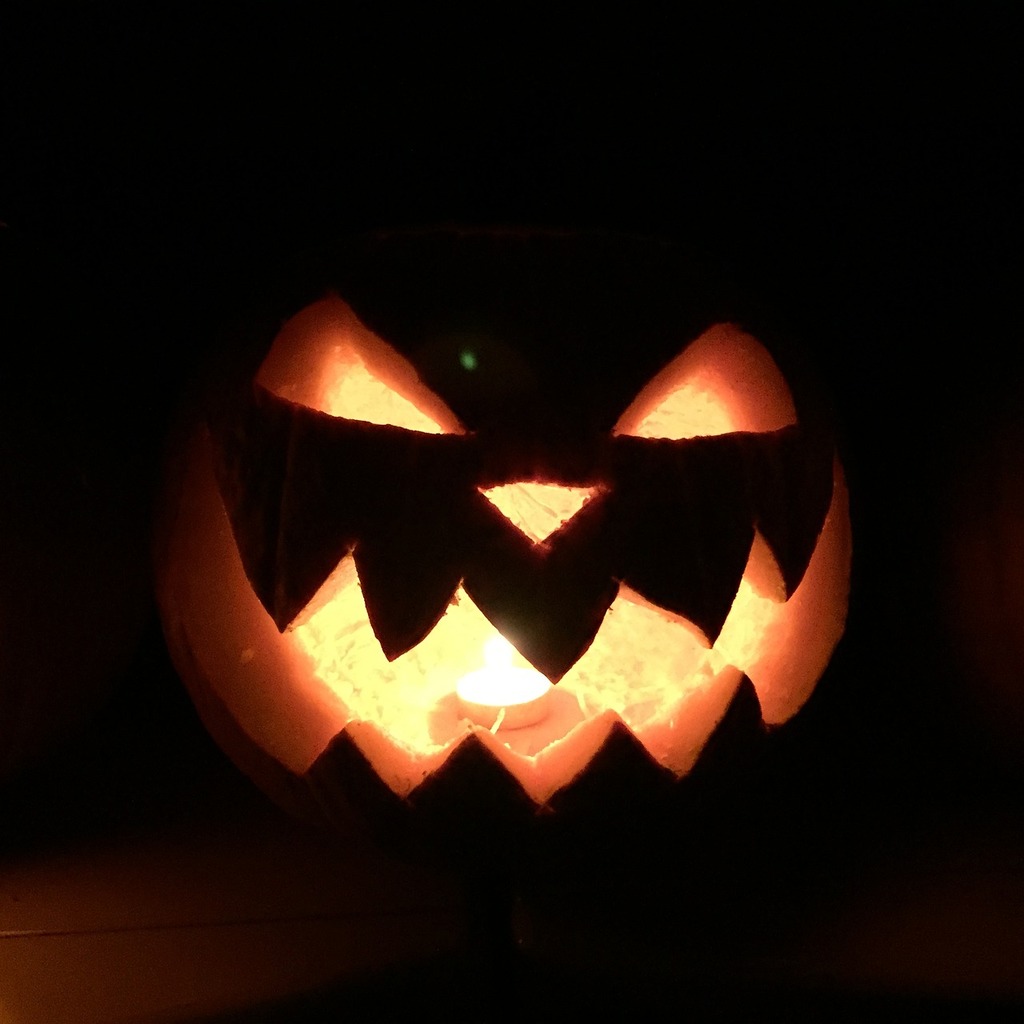
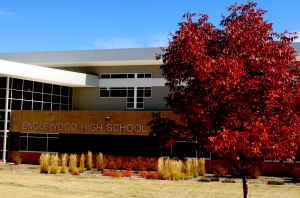
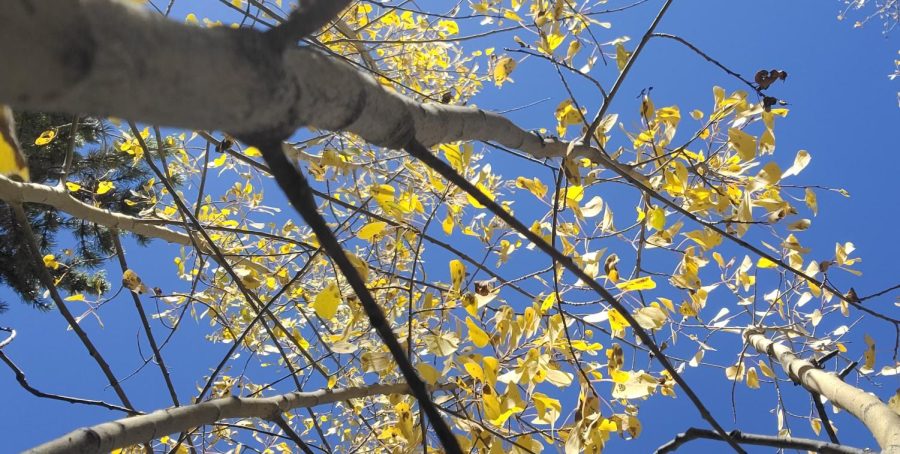
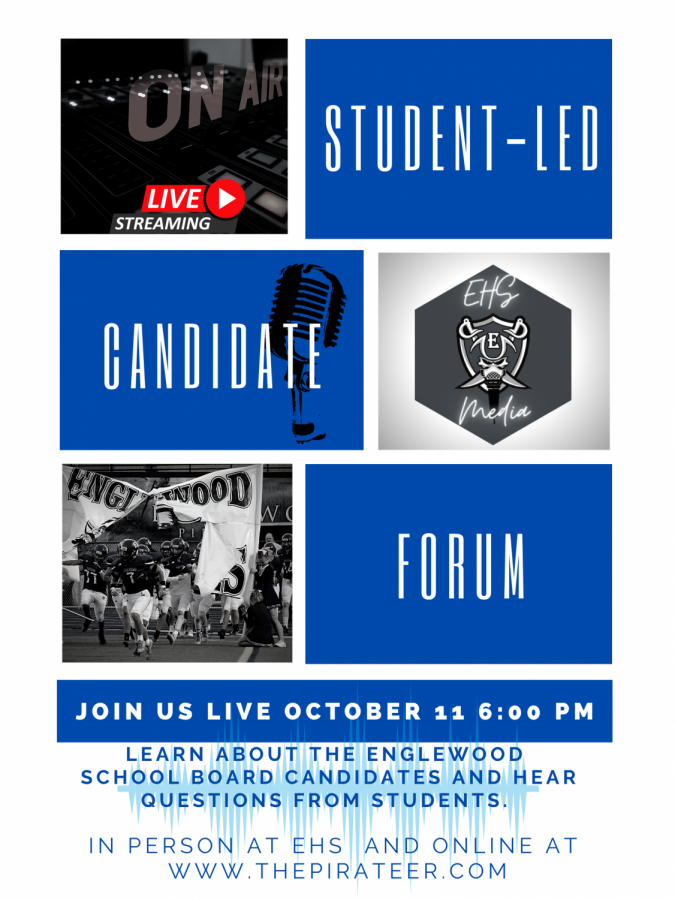
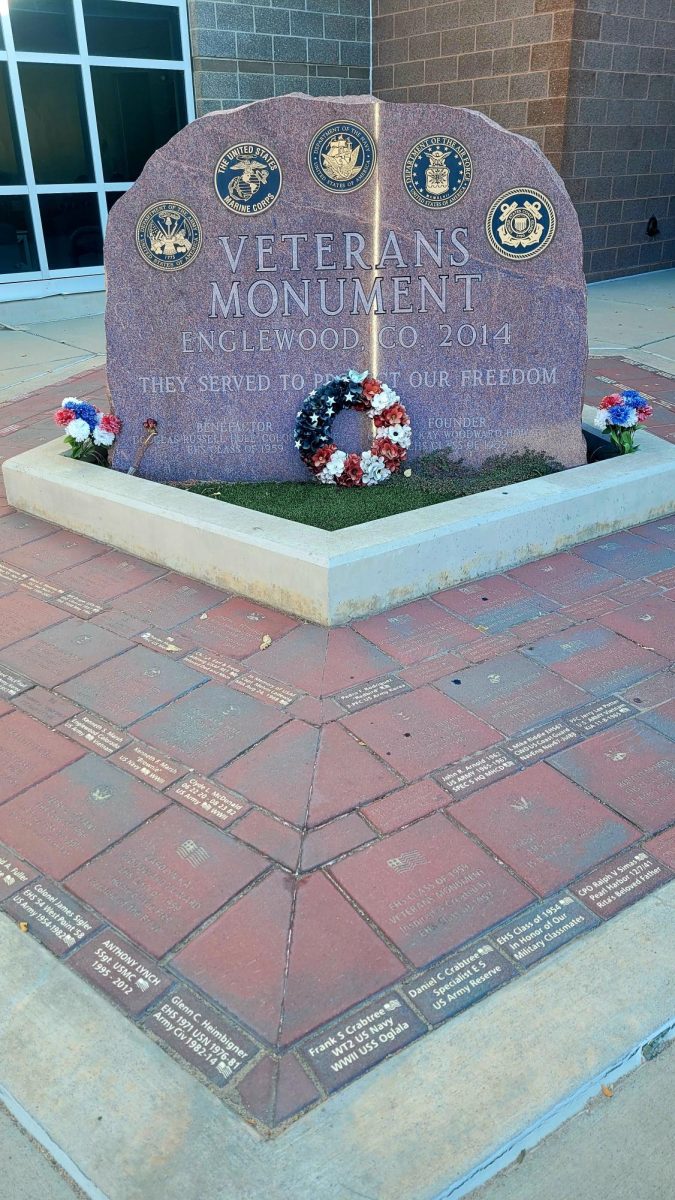


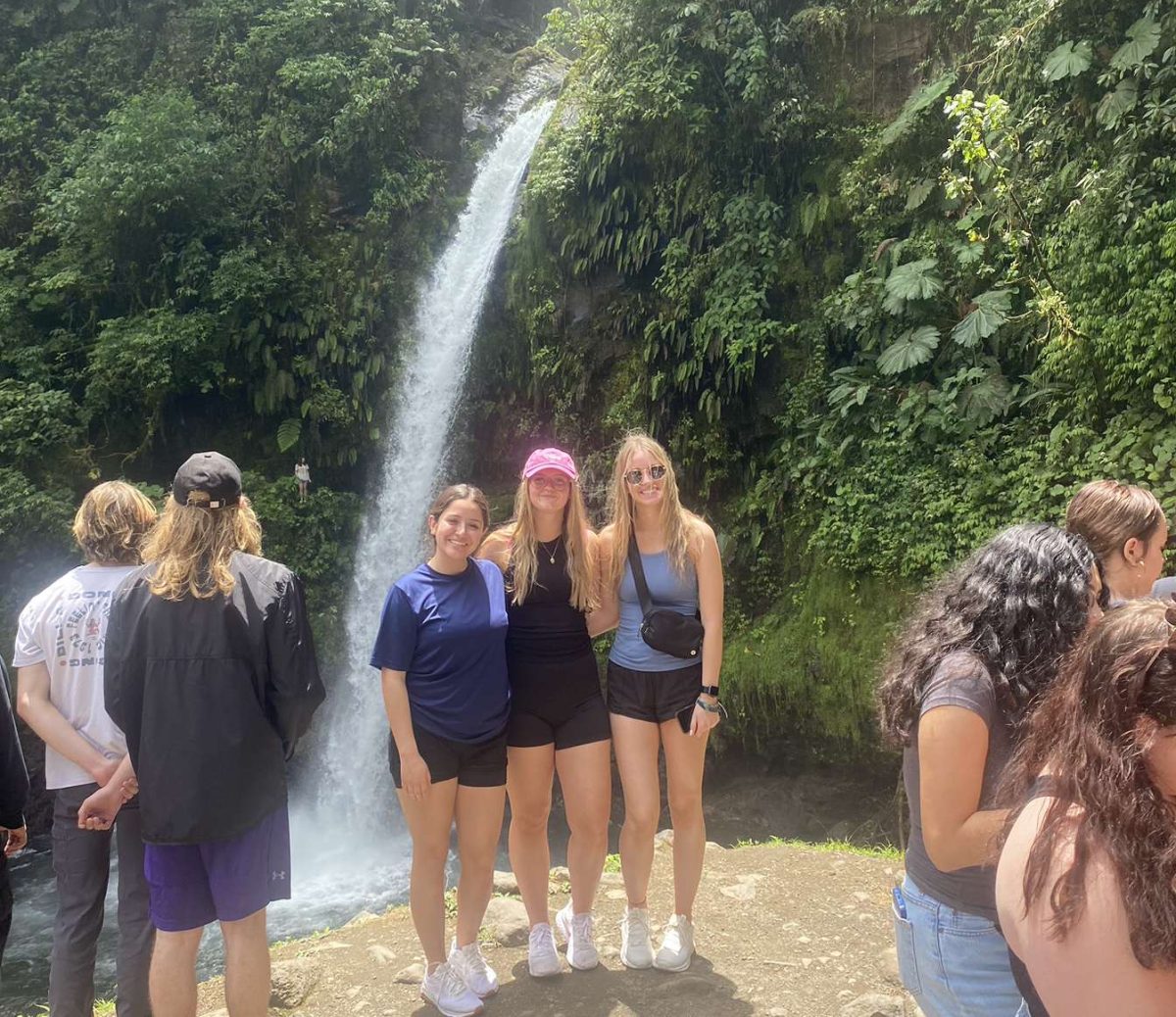

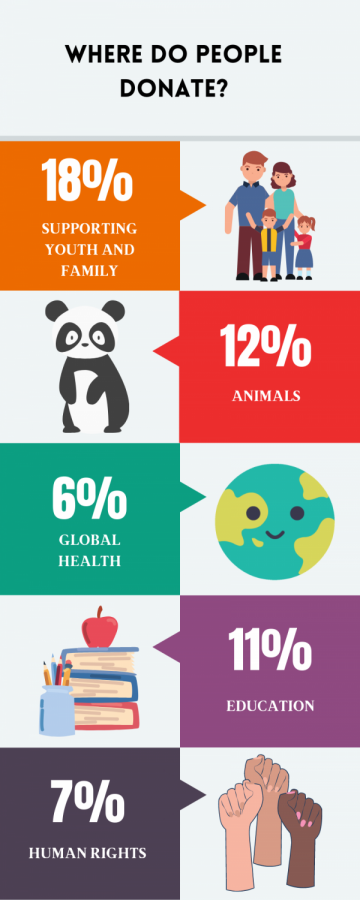
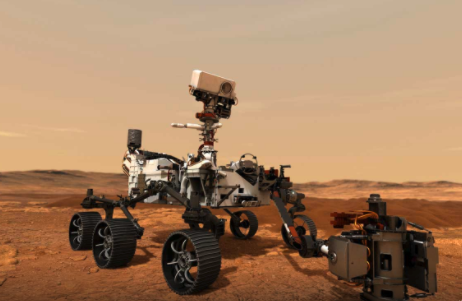
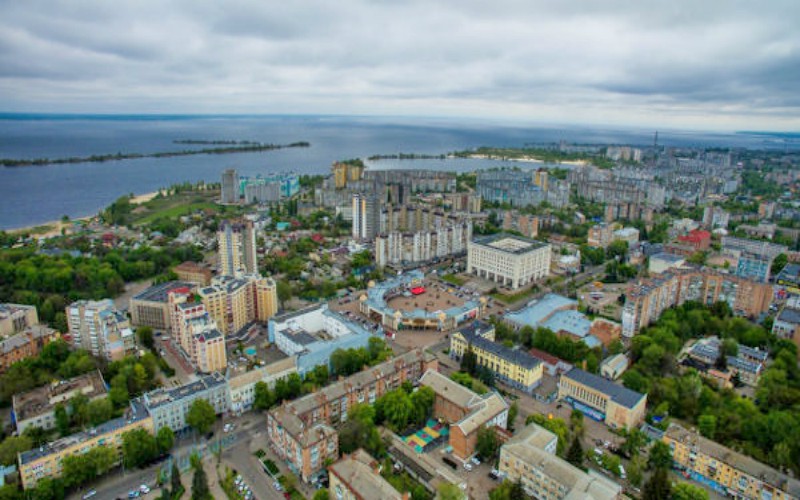
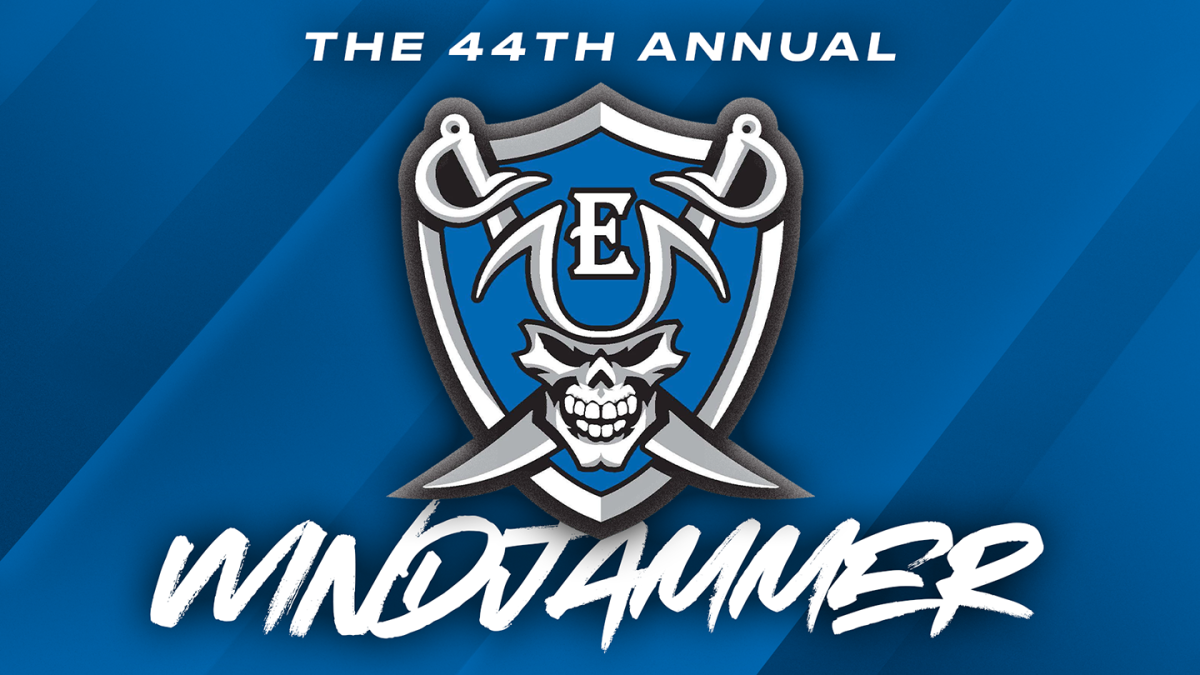
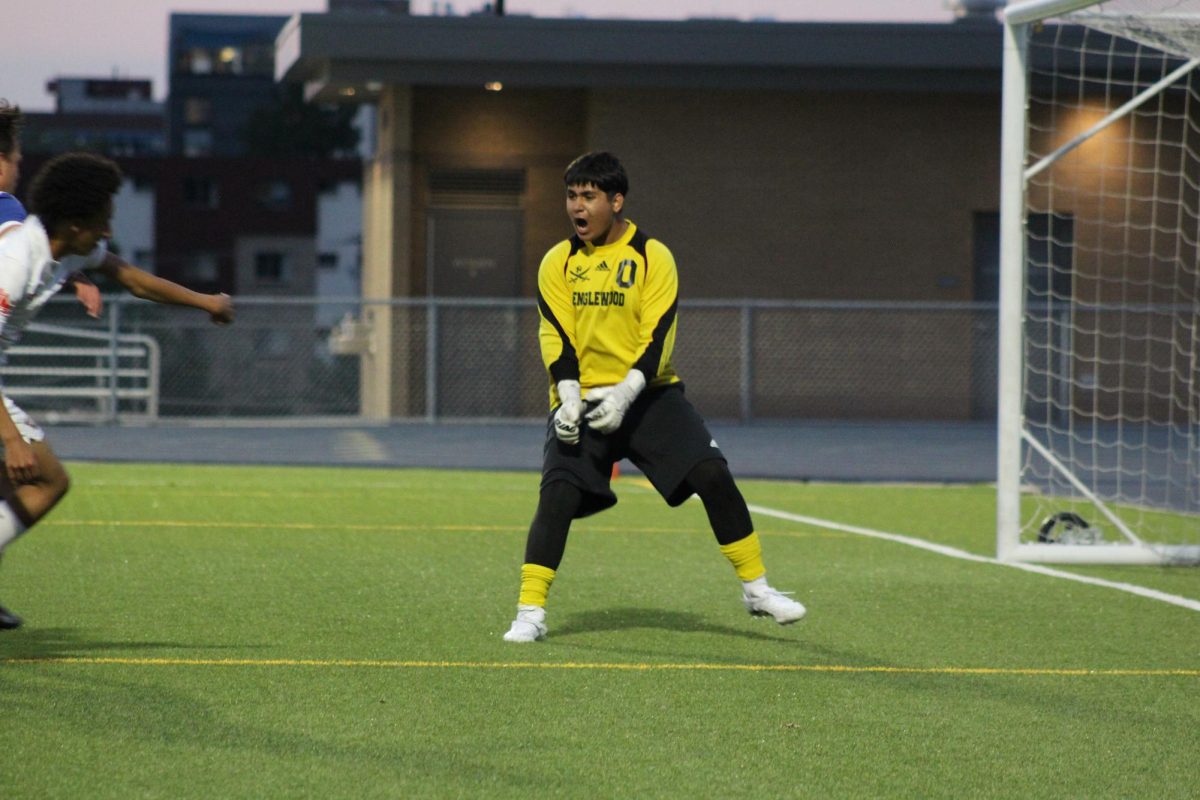
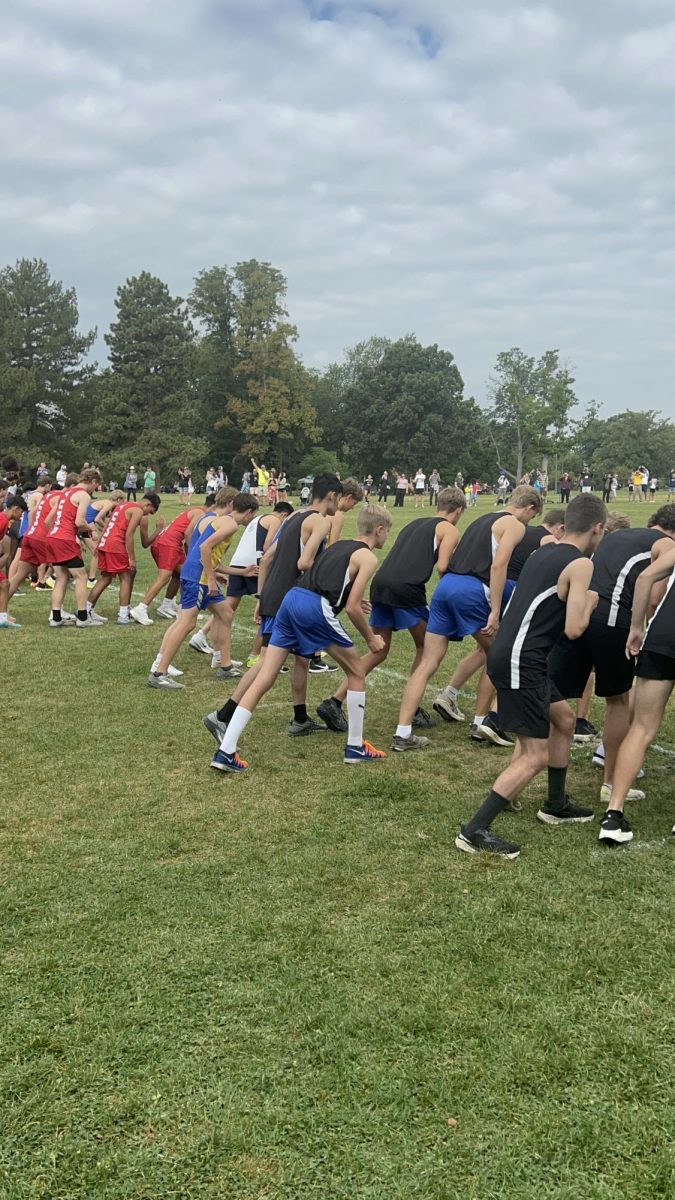
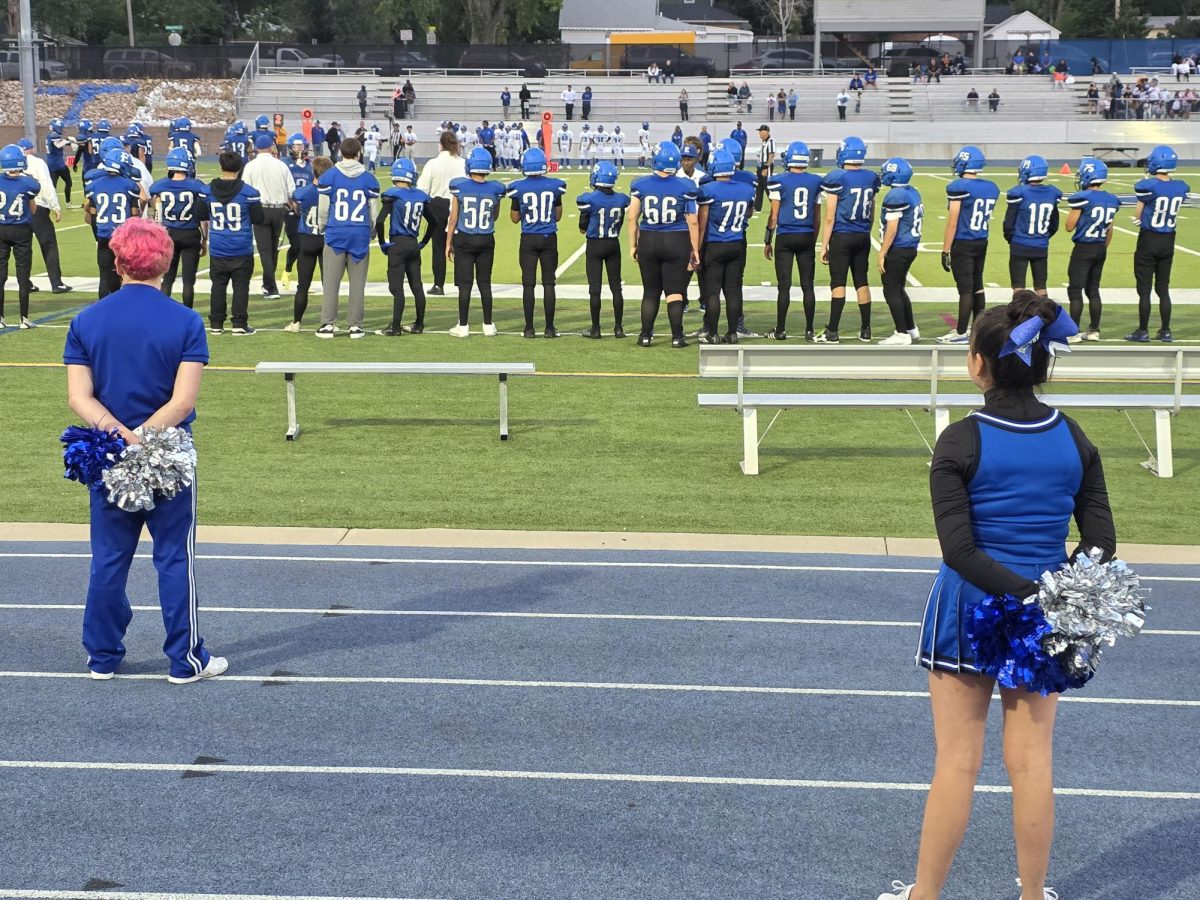
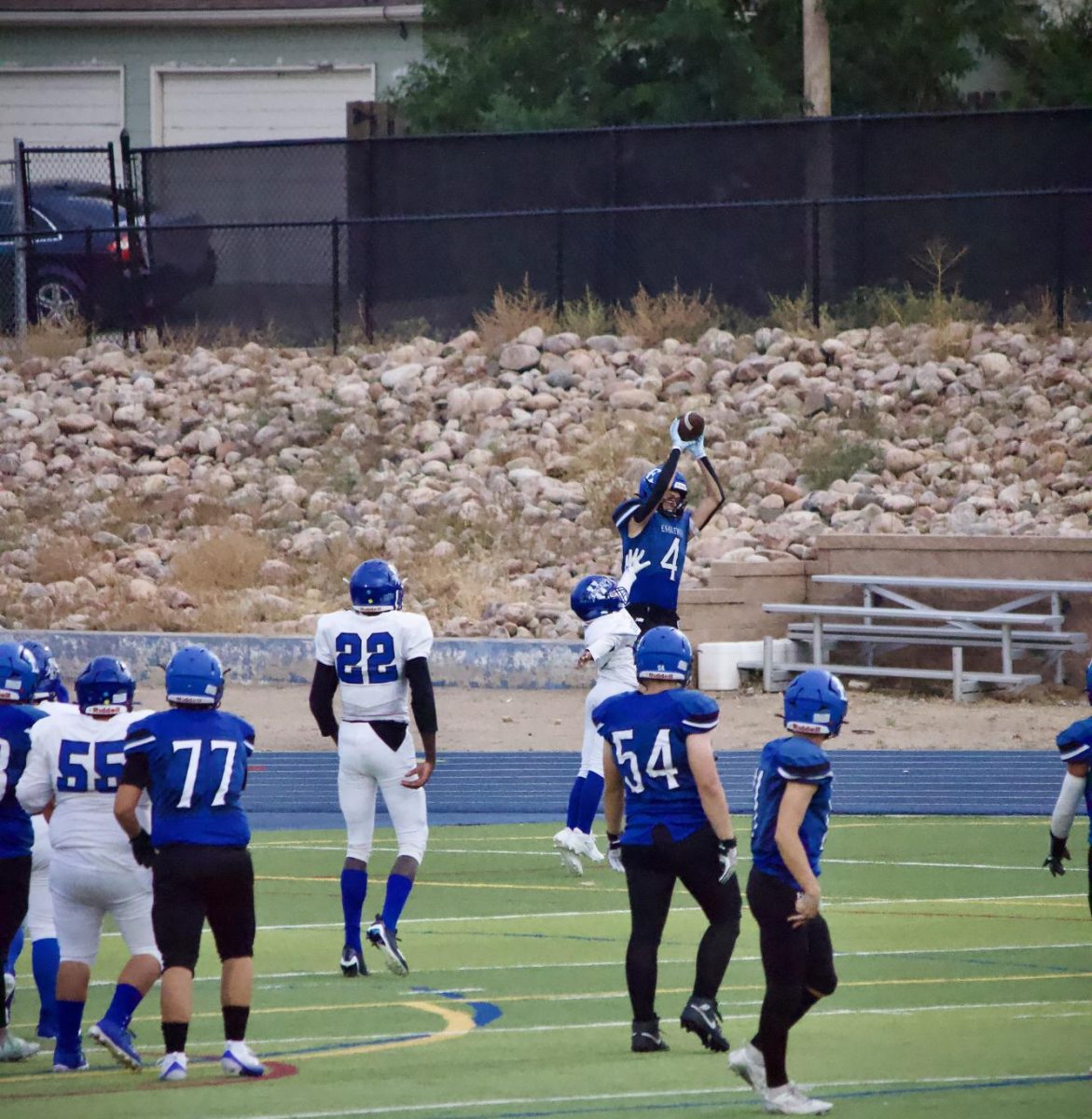
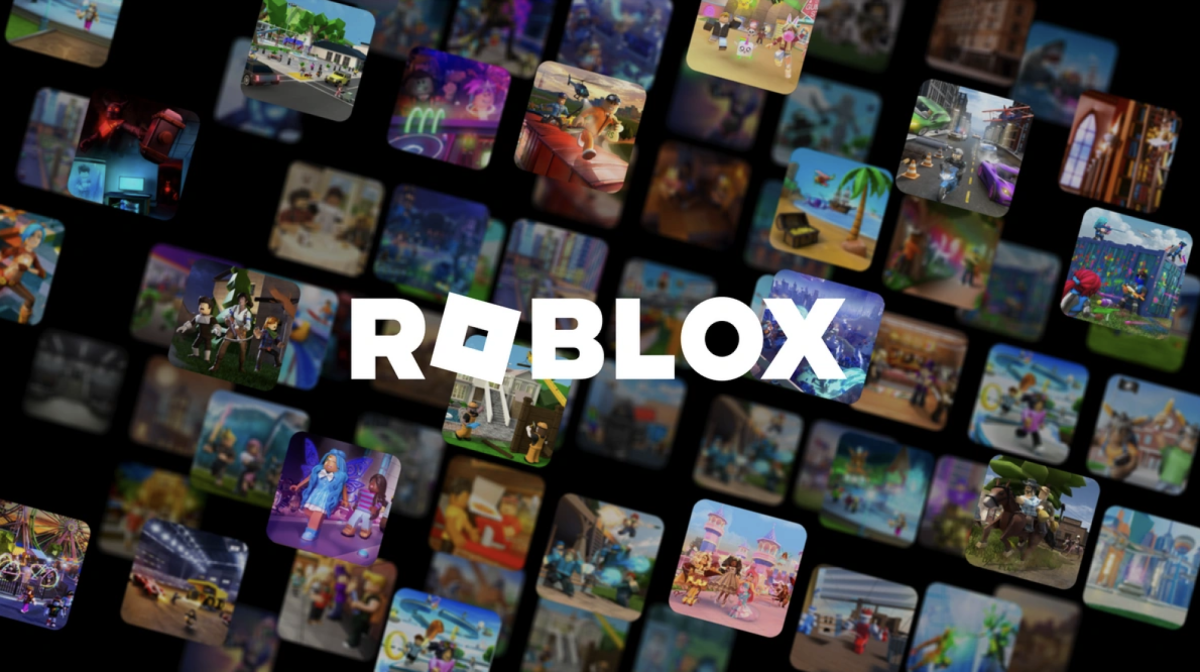
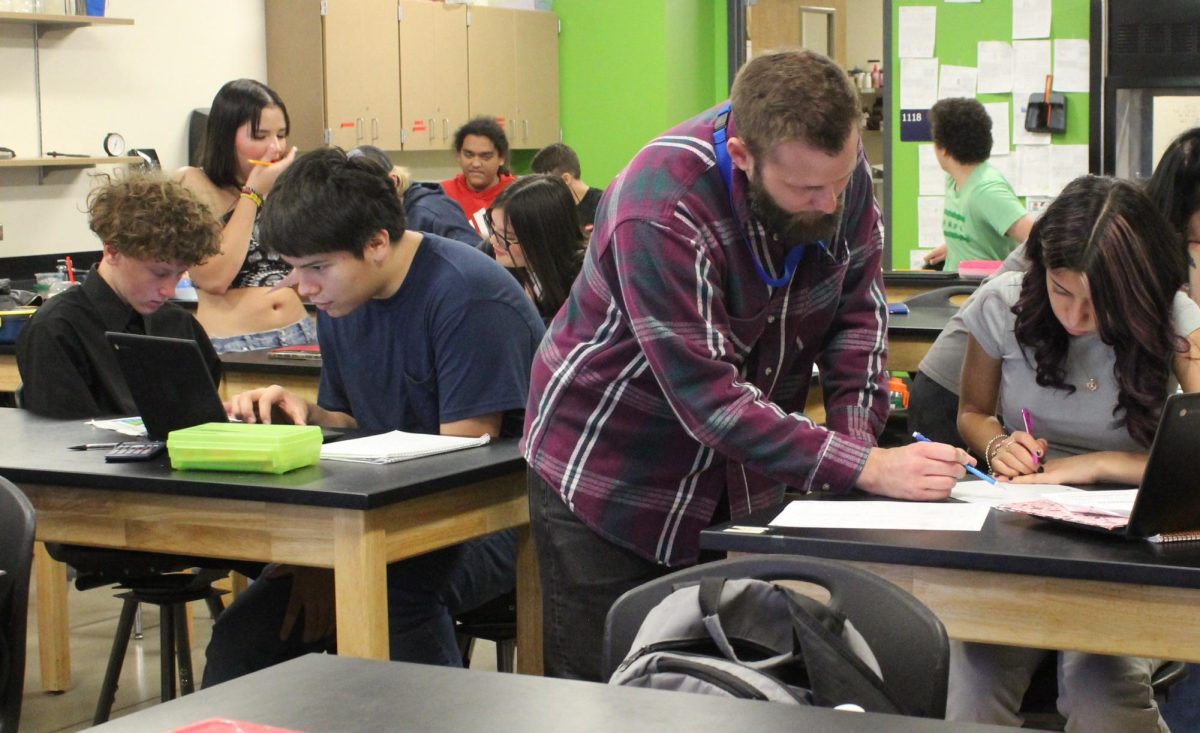
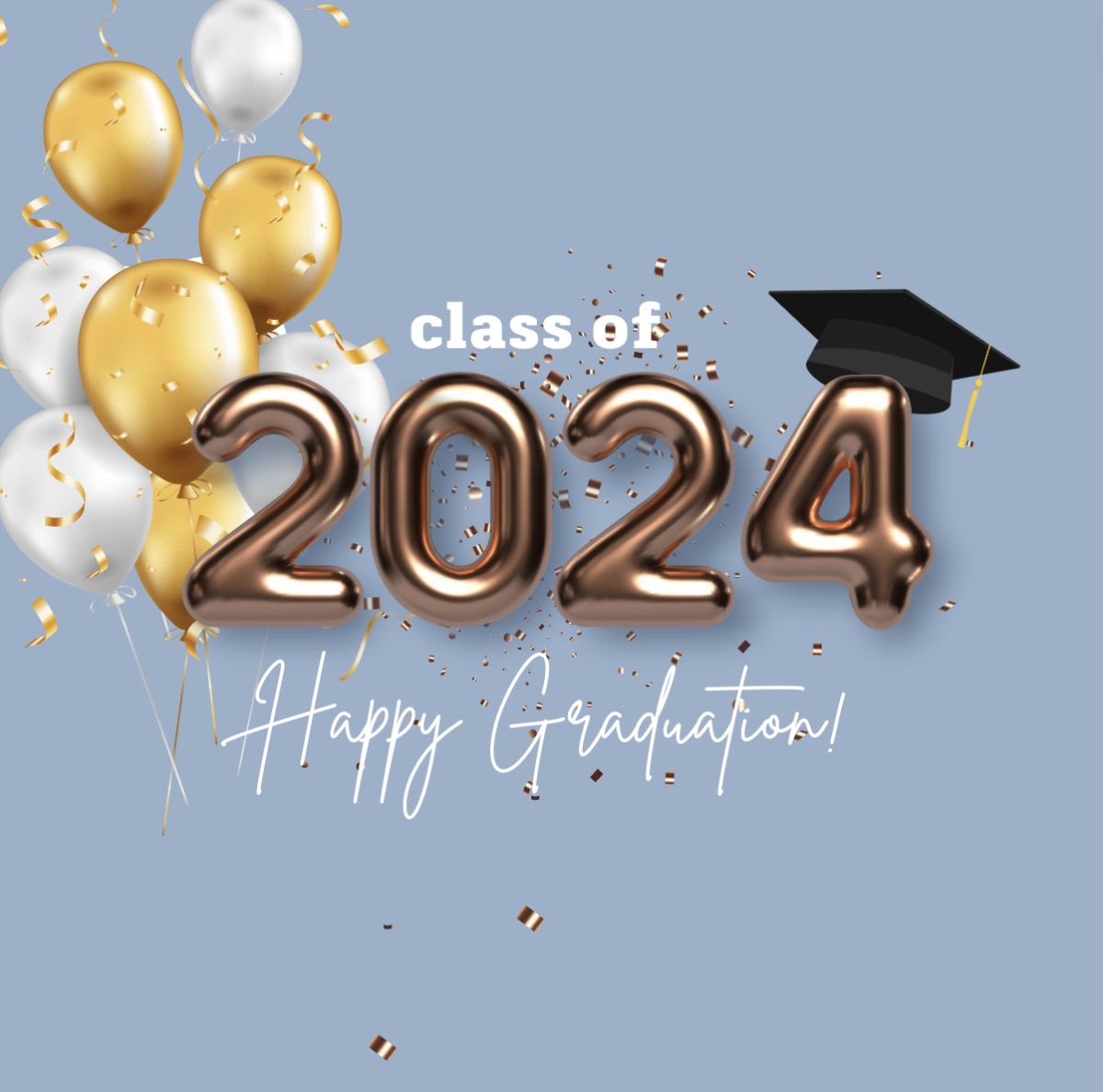
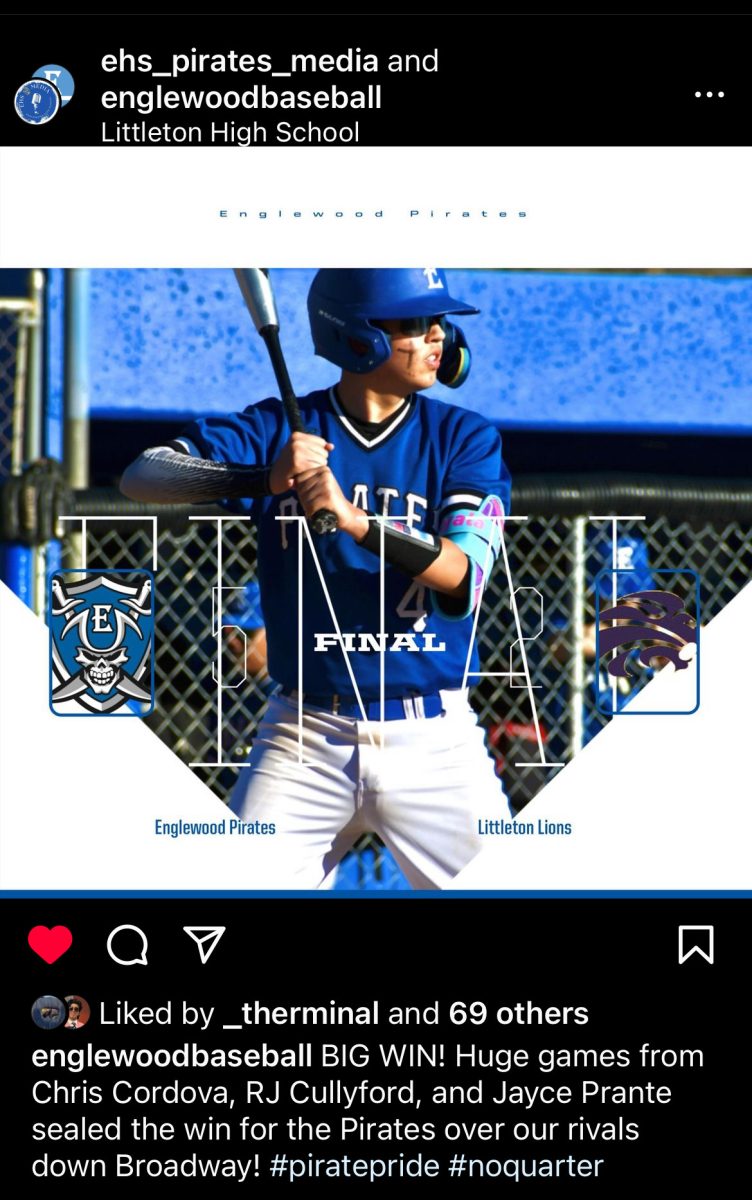
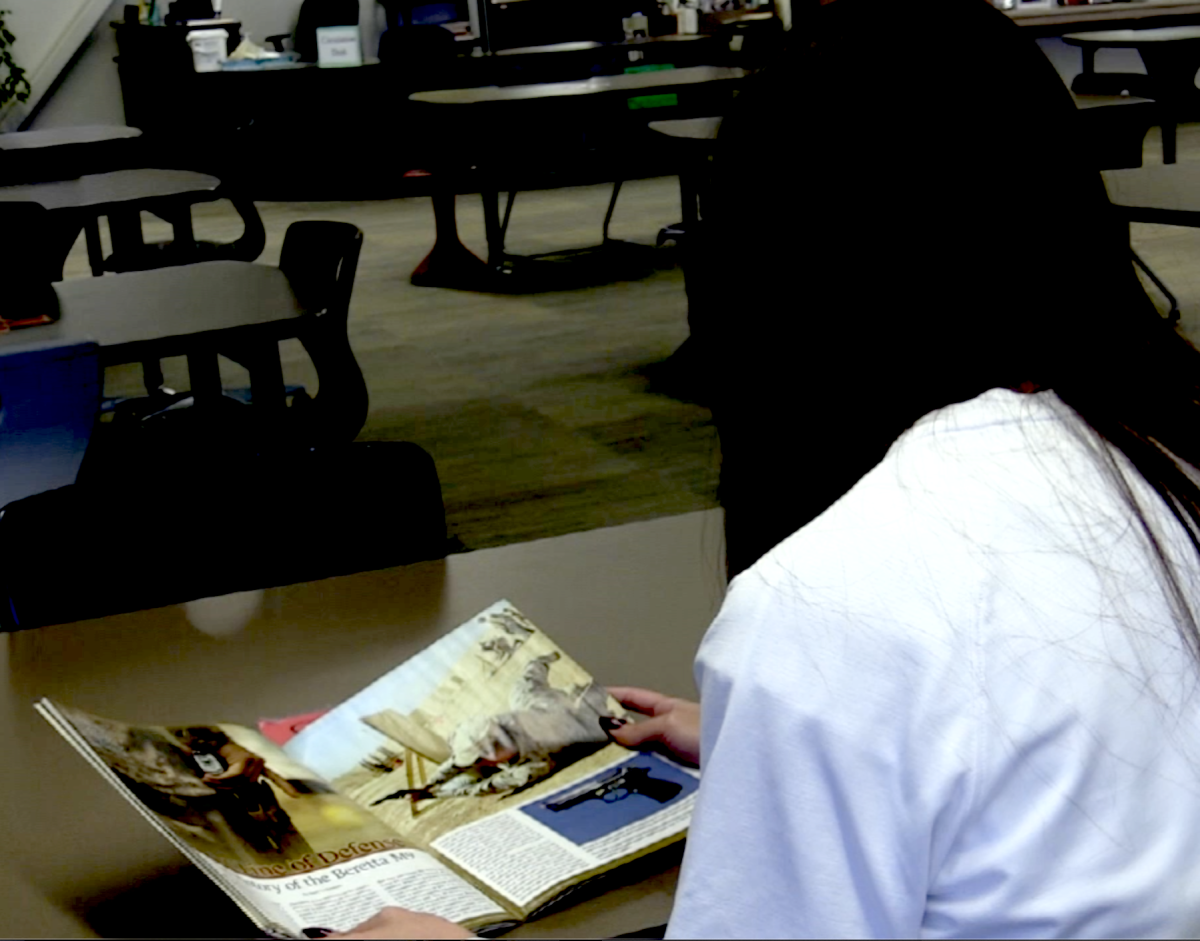





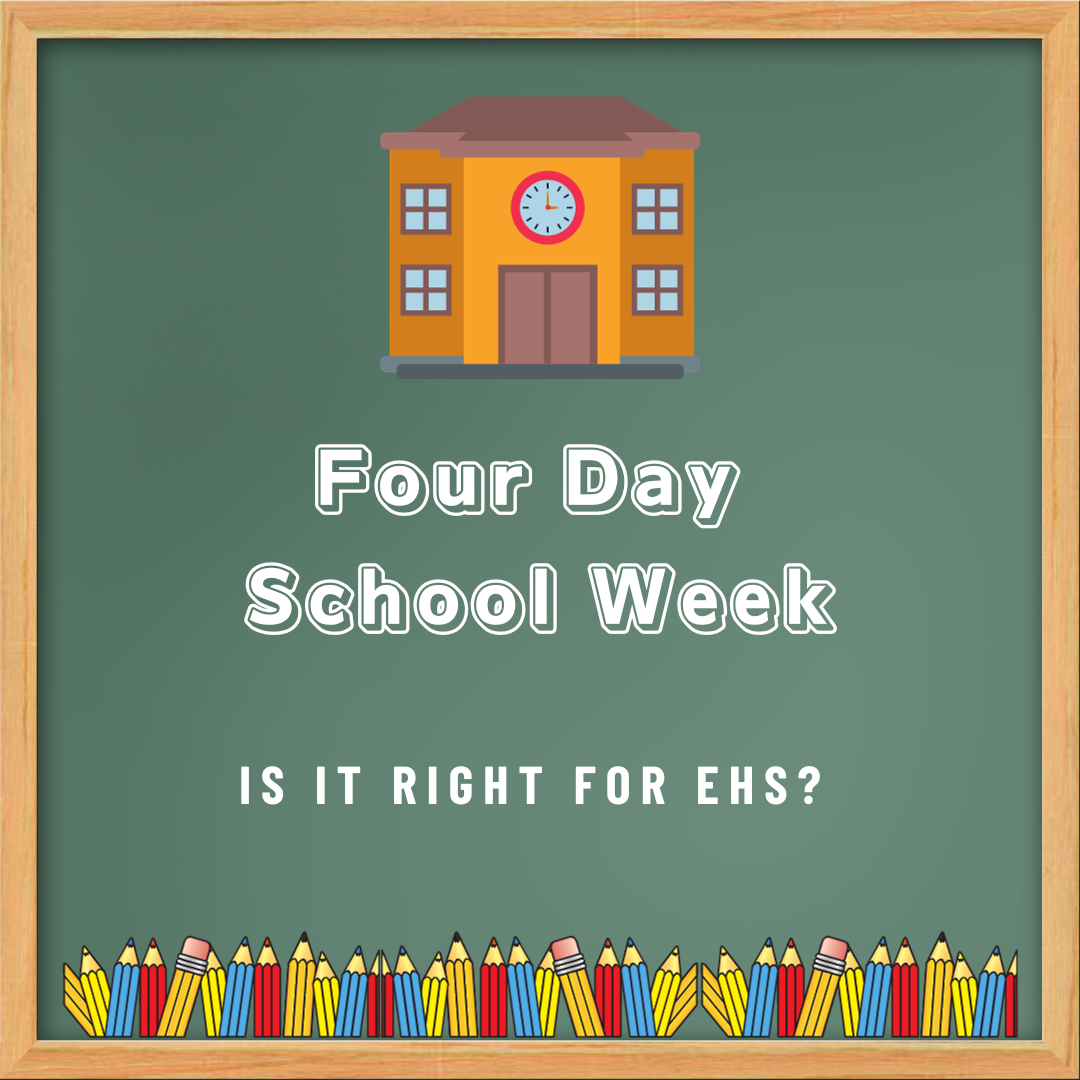
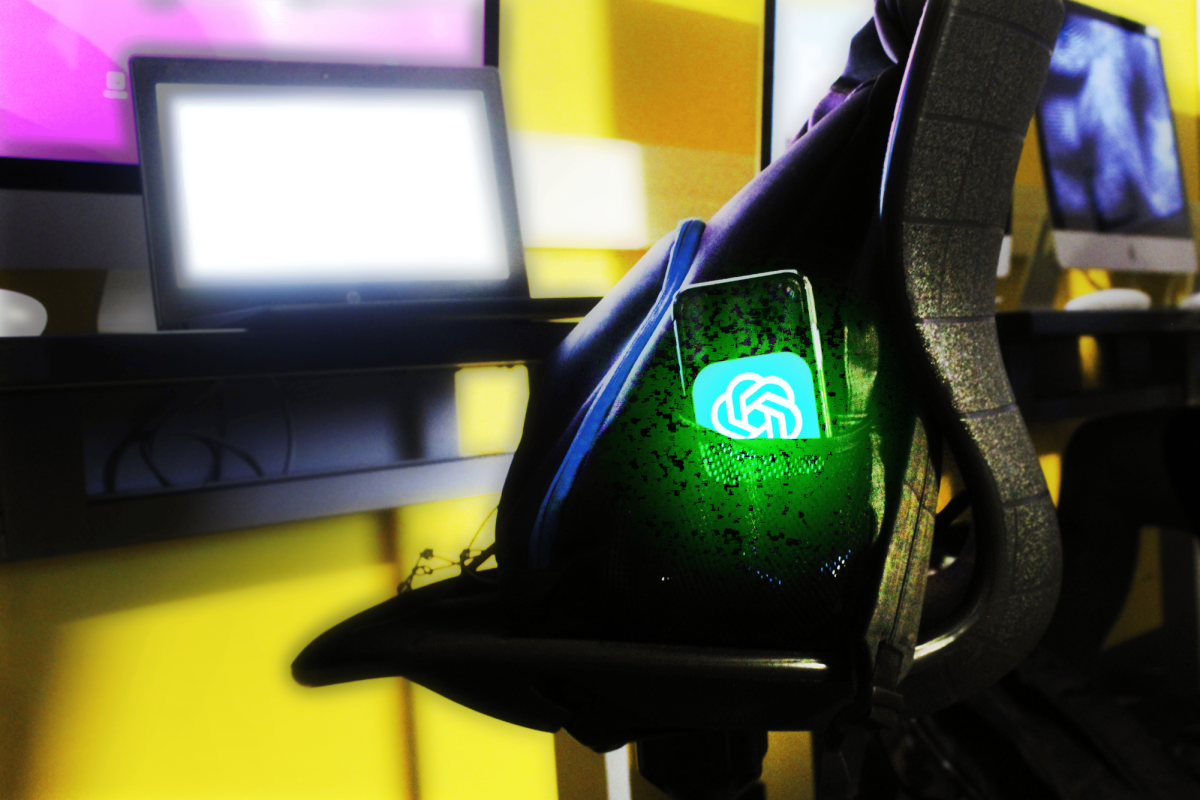
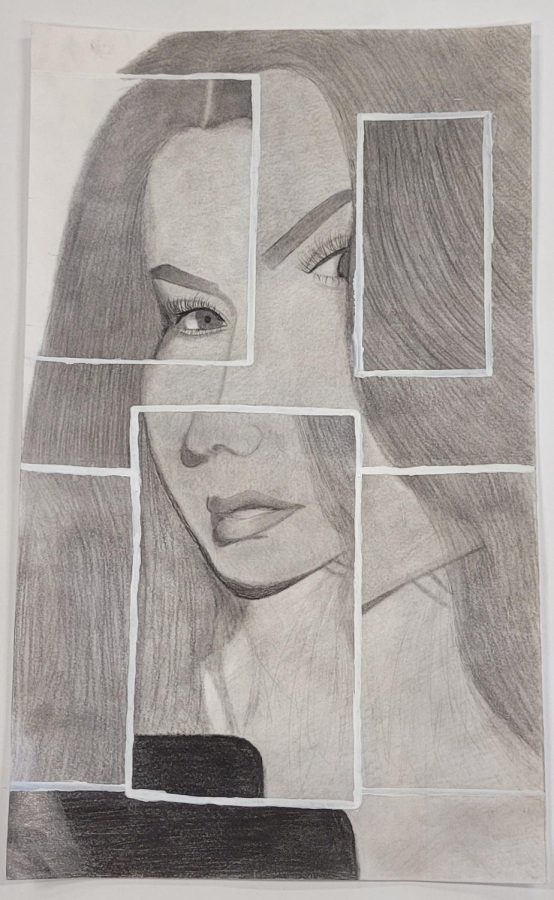
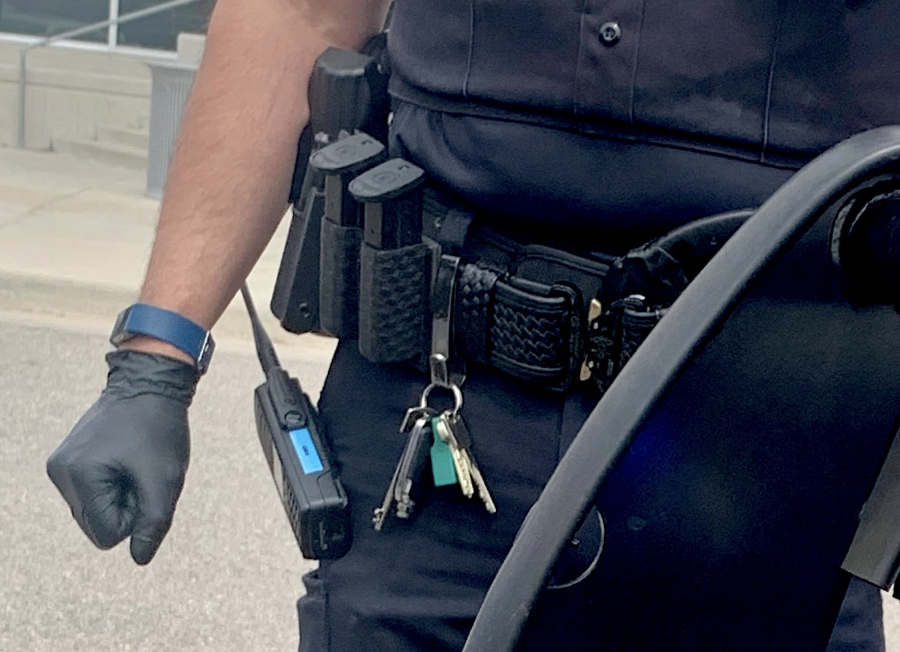
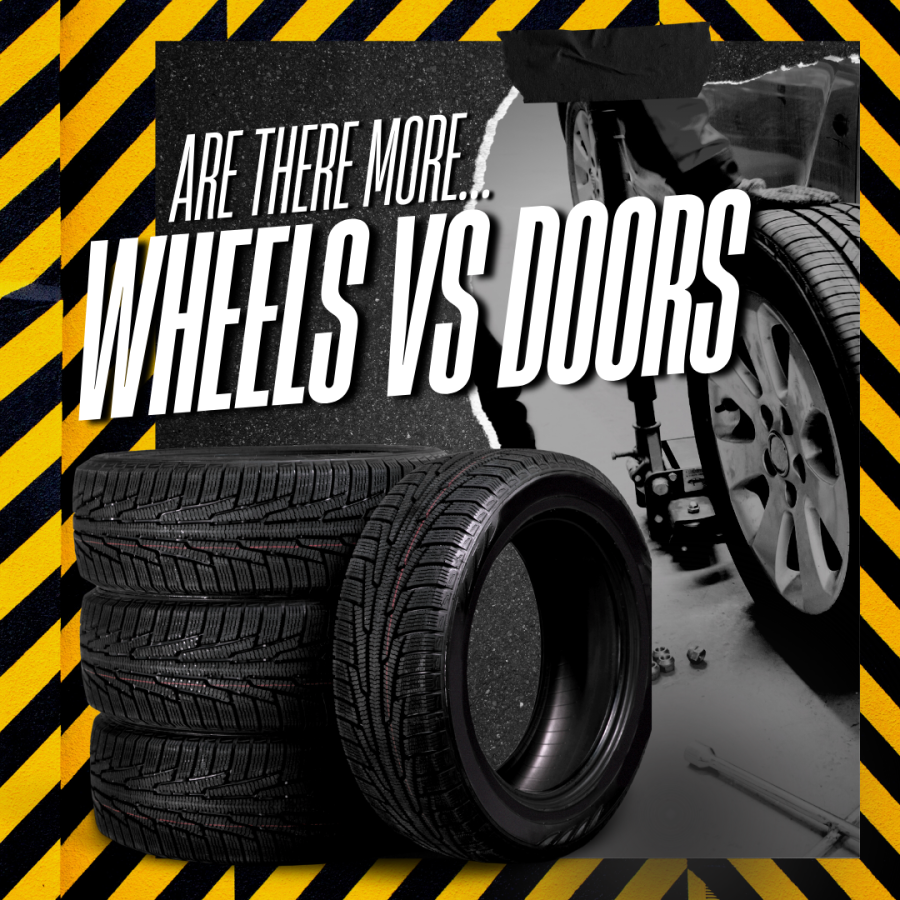
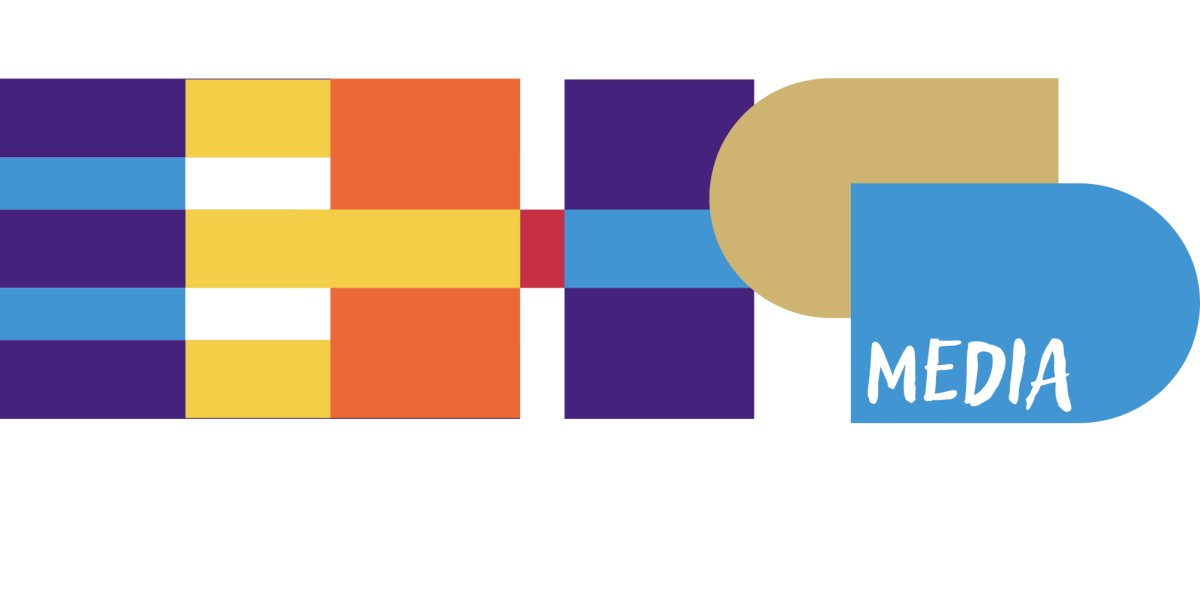
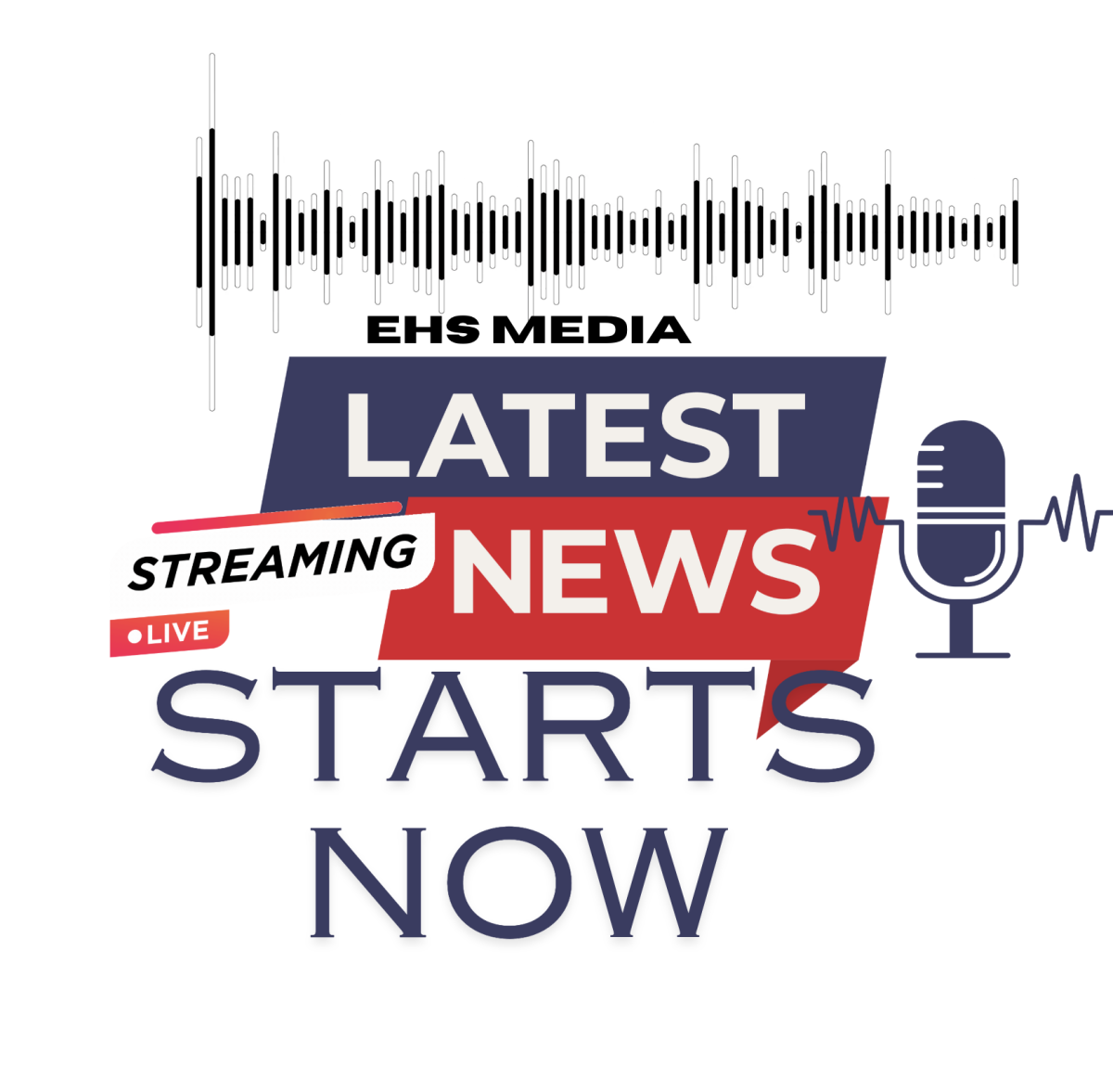

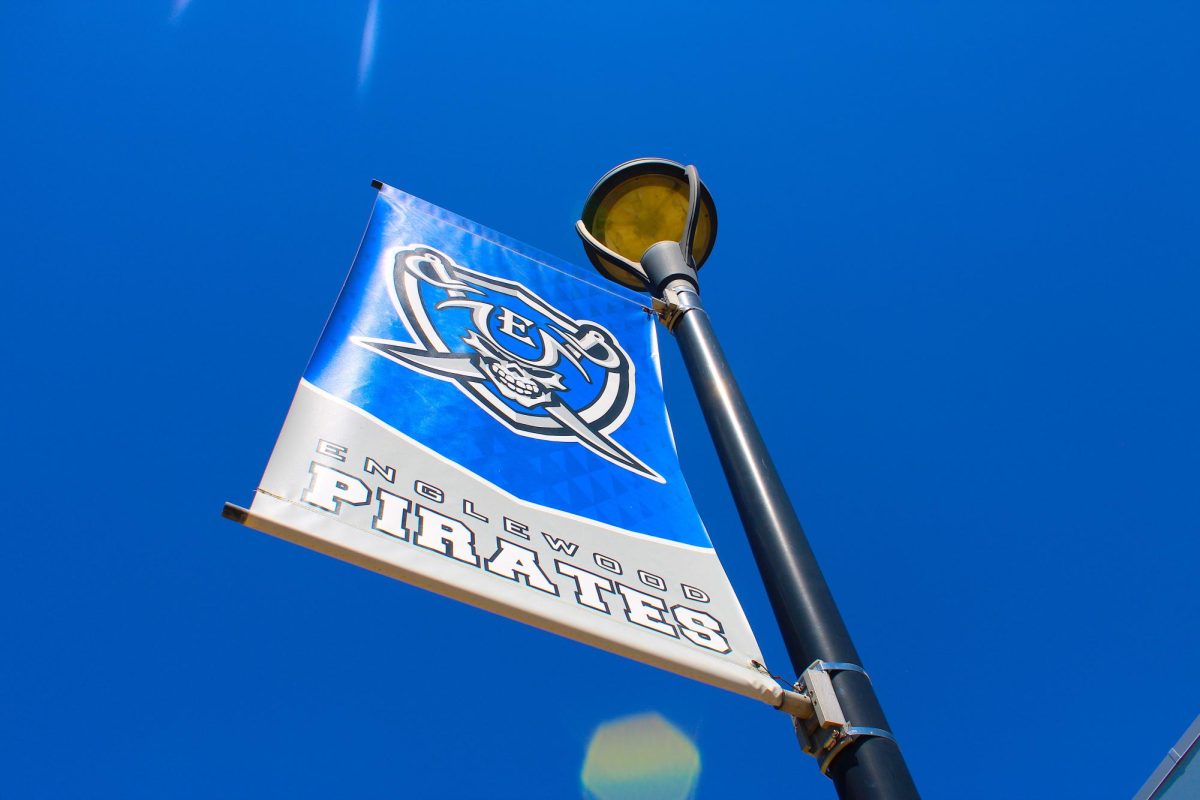

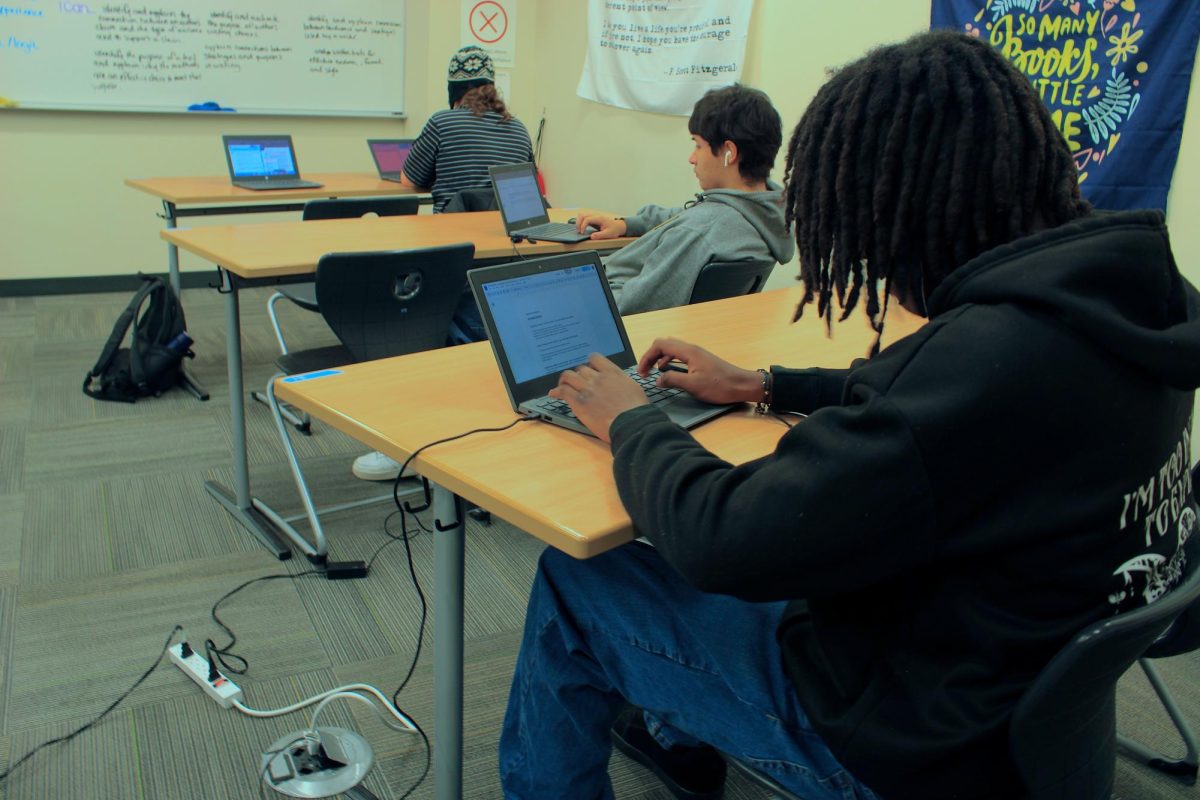
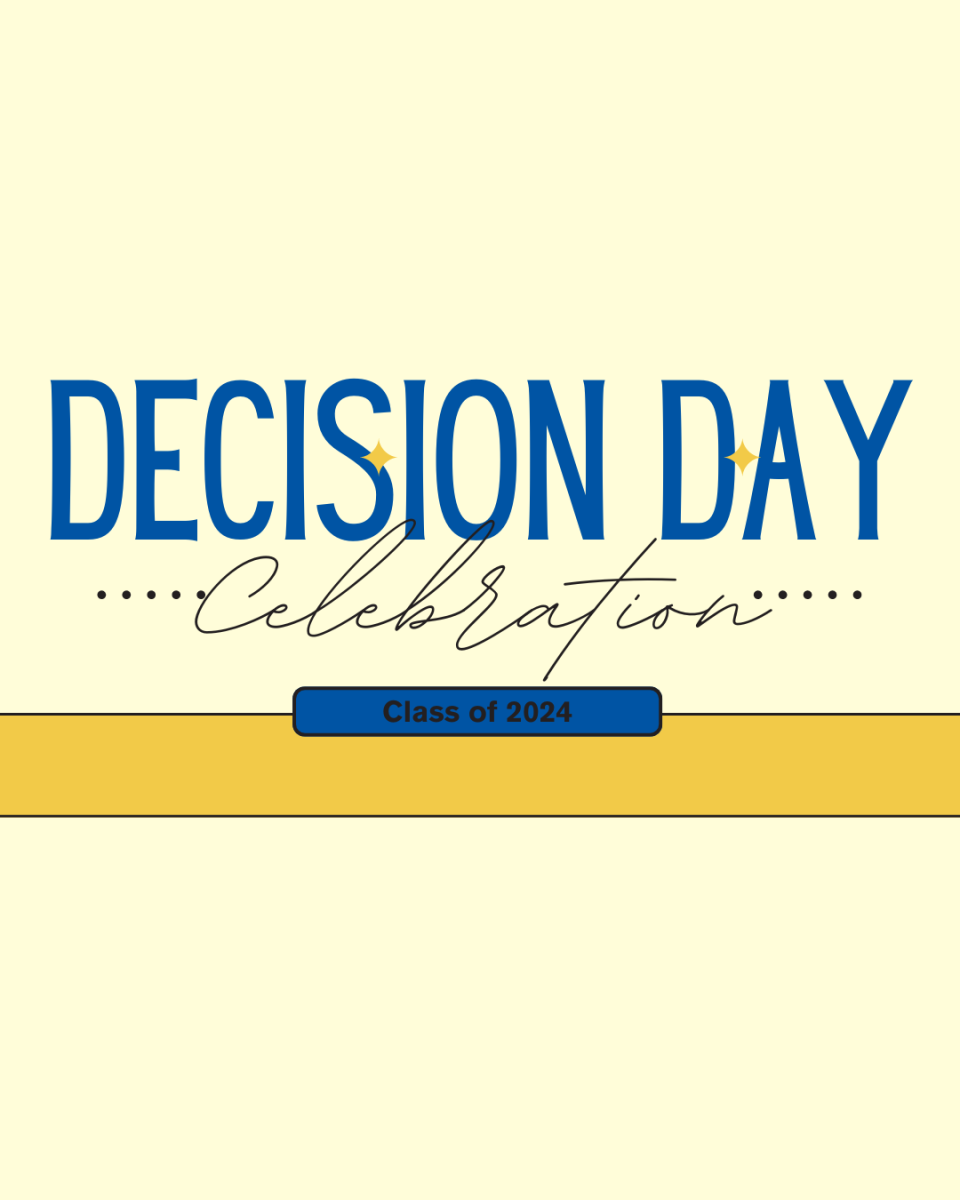

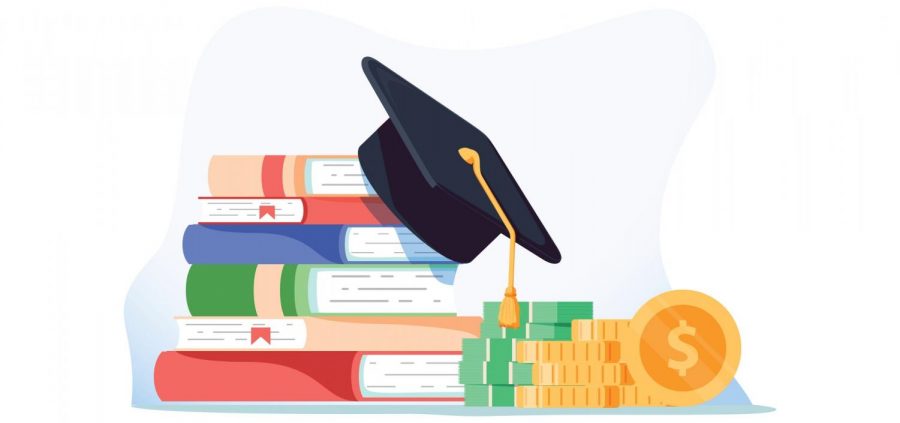
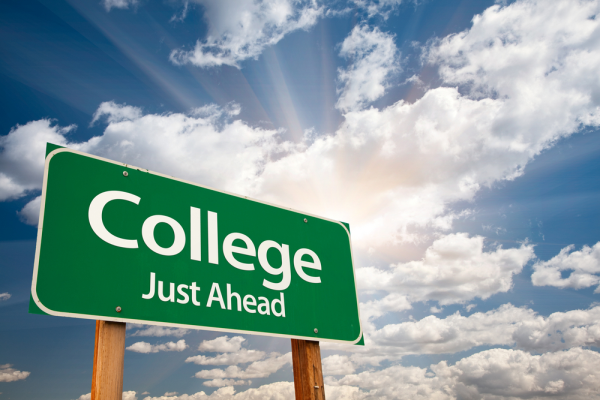

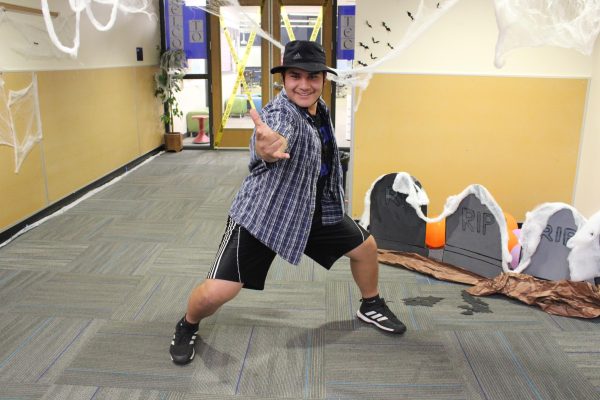
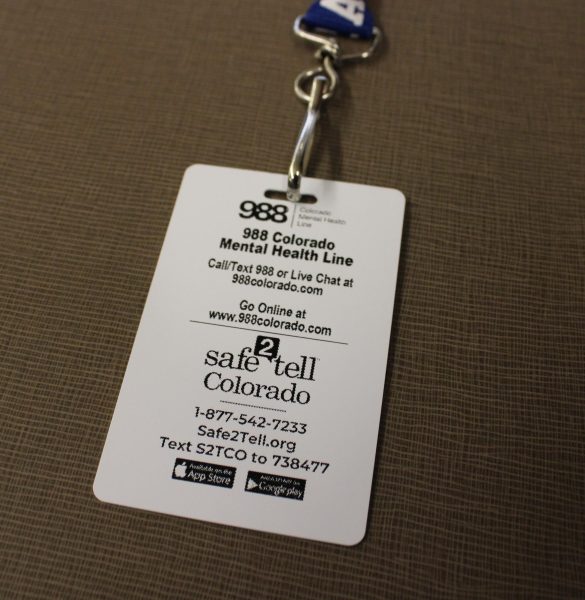
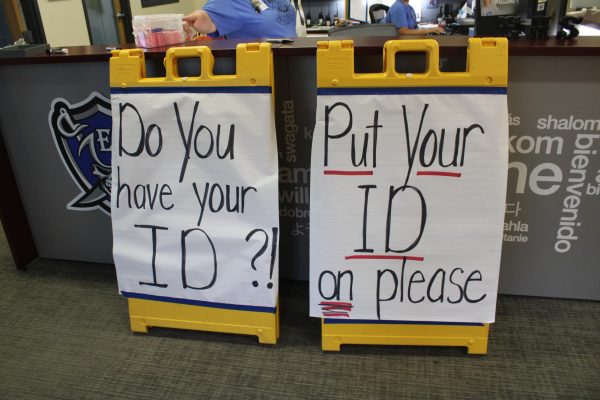
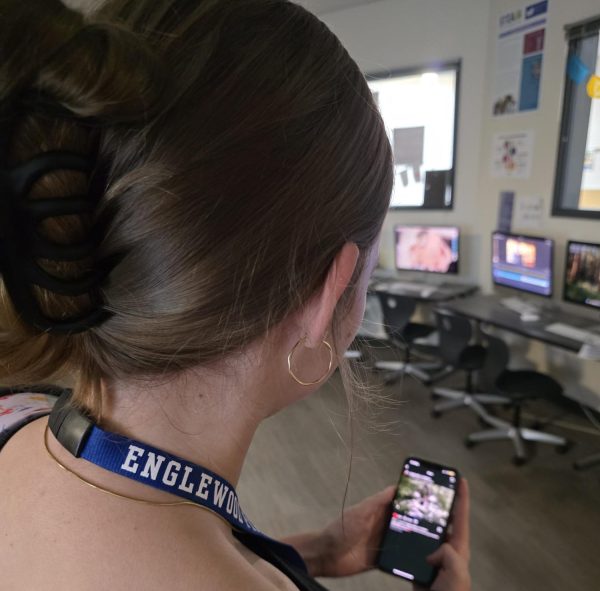

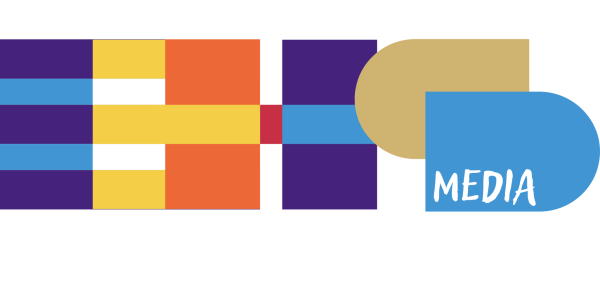
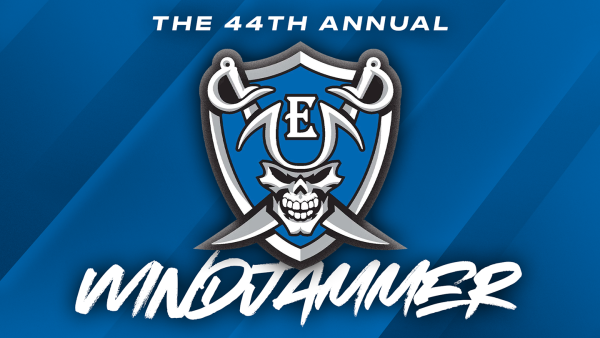
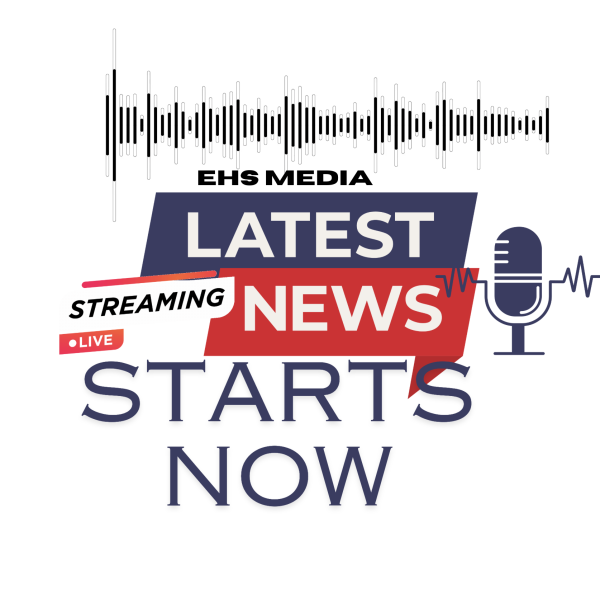
Spielekreis • Apr 24, 2018 at 2:29 pm
Thanks a lot for the post.Really thank you! Much obliged.